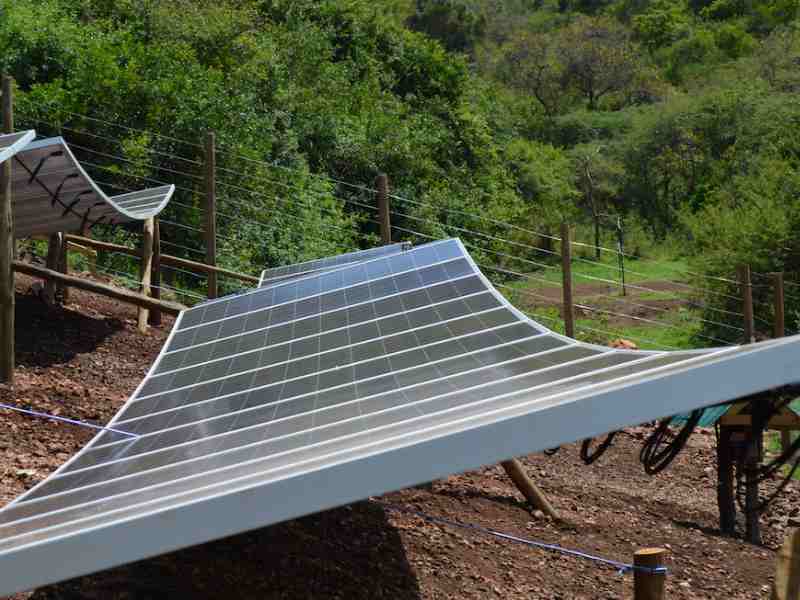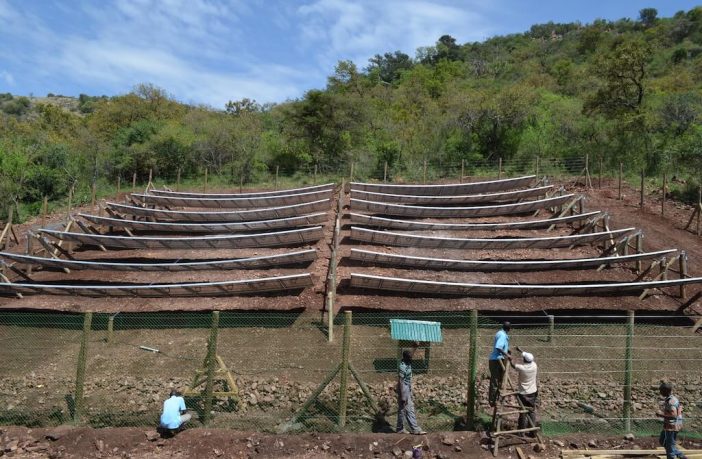- A Swiss-based clean energy provider, The meeco Group, has completed the structural installation of its first solar photovoltaic (PV) project using an innovative solar power mounting structure, the sun2rope.
- In a company statement, the Group explained that the eco-friendly system consists of PV modules mounted on tailor-made rope structures, specifically designed for the project.
The sun2rope PV energy installation, a first of its kind, is purposed to provide clean energy to the renowned Kenyan eco-retreat Cottar’s 1920 Camp, which is located close to Kenya’s famous national park, the Masai Mara. The multi-award-winning Cottar’s 1920 Camp spreads over an area of 1,500 hectares, with a large concentration of watchable wildlife, and provides ten tents to host nature-loving safari tourist.
To supply the eco-resort with renewable energy, seven rows of 168 highly efficient polycrystalline PV modules, with a total capacity of 54kWp have already been installed. Once the site is completely finalised and commissioned, the generated energy is intended to charge the batteries of the energy management and storage system sun2safe and inter alia for hot water treatment and for charging the sun2move e-bikes of the safari camp.

The modules are mounted on special long-life, exceptionally resistant technical ropes supported by robust wooden poles. These ropes are distinguished by their extremely high breaking strength and very low weight. Thus, the sun2rope solar PV structure is designed to resist wind speeds of up to 36 meters per second.
The core of the rope consists of a special UHMWPE (Ultra-High-Molecular-Weight Polyethylene) braid with a coat made of black UV resistant polyester braid. The technical ropes have been developed and engineered in conjunction with Gruschwitz Textilwerke AG, an enterprise from Germany (Baden-Württemberg), that has been engaged in this industry for more than 200 years.
With sun2rope the impact to the natural environment is minimised by the fact that heavy steel structures are replaced with rope and sturdy wood. It additionally contributes to achieving other targets, such as reducing the logistic costs by making use of the locally available wood from the controlled planting areas against steel structures with long shipping delays. This way the CO2 footprint of the installation is scaled back dramatically.
Being one of the eleven Global Ecosphere Retreats worldwide, the Cottar’s 1920 Camp is committed to the protection of nature and wildlife, as well as the preservation of the original culture and the lifestyle of the neighbouring Maasai tribe, by combining cultural responsibility with animal welfare, sustainable management and soft tourism.
“We are proud to support the Cottar’s 1920 Camp in its endeavour of protecting wildlife and nature by delivering clean, sustainable and innovative renewable energy solutions as a sustainable power source, giving way to a reduced use and new deployment of diesel-based generators,” states Michael Georg , senior project manager of The meeco Group.
Author: Ashley Theron
This article was originally published on ESI Africa and is republished with permission with minor editorial changes.











